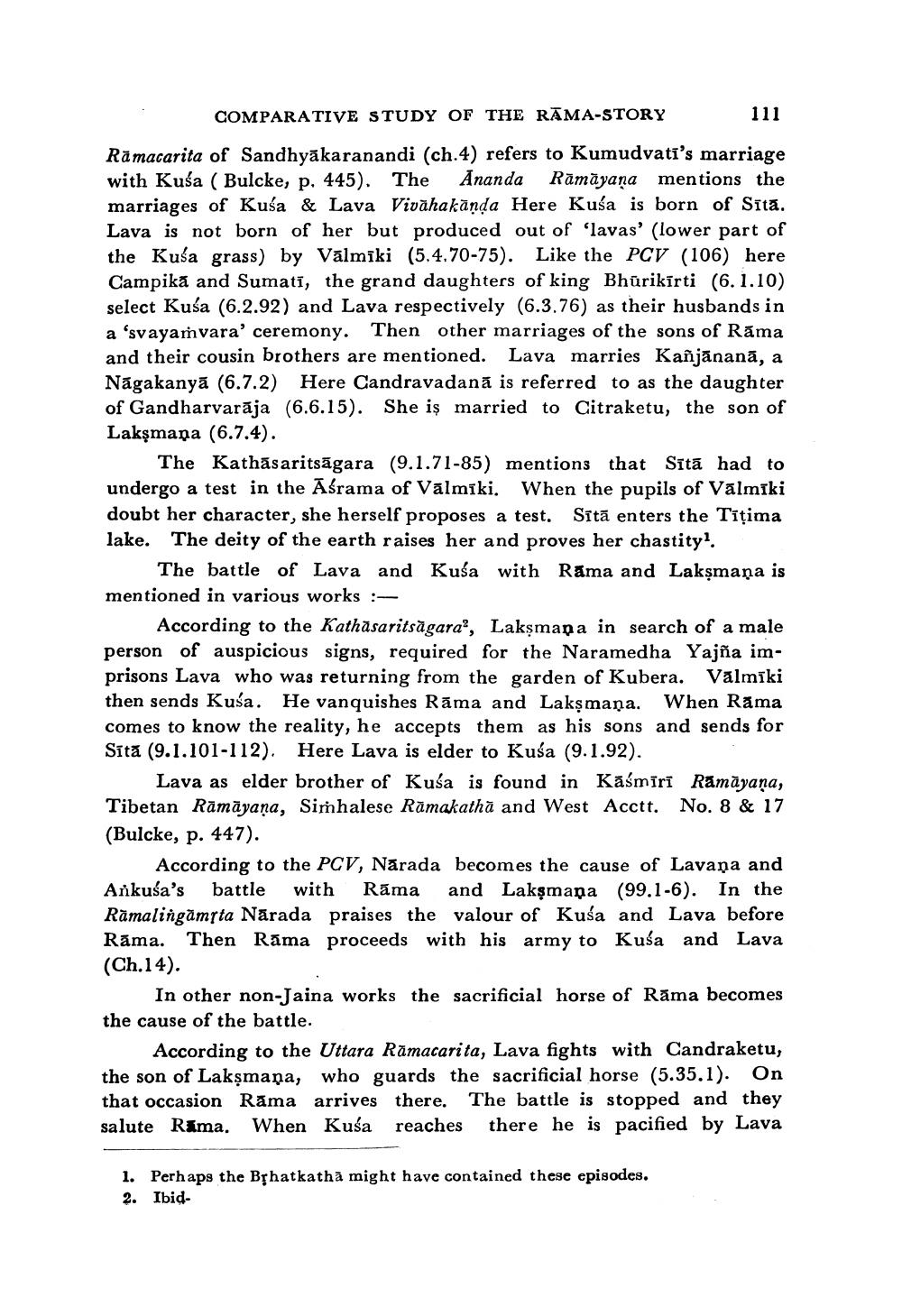________________
COMPARATIVE STUDY OF THE RĀMA-STORY
111
Rāmacarita of Sandhyākaranandi (ch.4) refers to Kumudvati's marriage with Kuśa ( Bulcke, p. 445). The Ananda Rāmāyana mentions the marriages of Kuba & Lava Vivahakānda Here Kusa is born of Sita. Lava is not born of her but produced out of 'lavas' (lower part of the Kusa grass) by Vālmīki (5.4.70-75). Like the PCV (106) here Campika and Sumatī, the grand daughters of king Bhūrikīrti (6.1.10) select Kuśa (6.2.92) and Lava respectively (6.3.76) as their husbands in a 'svayamvara' ceremony. Then other marriages of the sons of Rāma and their cousin brothers are mentioned. Lava marries Kañjānanā, a Nāgakanyā (6.7.2) Here Candravadanā is referred to as the daughter of Gandharvarāja (6.6.15). She is married to Citraketu, the son of Lakşmana (6.7.4).
The Kathāsaritsāgara (9.1.71-85) mentions that Sita had to undergo a test in the Aśrama of Valmīki. When the pupils of Valmīki doubt her character, she herself proposes a test. Sítā enters the Tīțima lake. The deity of the earth raises her and proves her chastity?
The battle of Lava and Kuśa with Rama and Lakşmaņa is mentioned in various works :
According to the Kathāsaritsăgara, Laksmana in search of a male person of auspicious signs, required for the Naramedha Yajña imprisons Lava who was returning from the garden of Kubera. Valmiki then sends Kusa. He vanquishes Rāma and Lakşmaņa. When Rāma comes to know the reality, he accepts them as his sons and sends for Sítă (9.1.101-112). Here Lava is elder to Kuša (9.1.92).
Lava as elder brother of Kuća is found in Kaśmīrī Rāmāyaṇa, Tibetan Rāmāyana, Simhalese Rāmakathā and West Acctt. No. 8 & 17 (Bulcke, p. 447).
According to the PCV, Narada becomes the cause of Lavana and Ankuśa's battle with Rāma and Lakşmaņa (99.1-6). In the Rāmalingāmsta Nārada praises the valour of Kuśa and Lava before Ráma. Then Rāma proceeds with his army to Kuśa and Lava (Ch.14).
In other non-Jaina works the sacrificial horse of Rama becomes the cause of the battle.
According to the Uttara Rāmacarita, Lava fights with Candraketu, the son of Laksmana, who guards the sacrificial horse (5.35.1). On that occasion Rāma arrives there. The battle is stopped and they salute Räma. When Kusa reaches there he is pacified by Lava
1. Perhaps the Bșhatkathā might have contained these episodes. 2. Ibid.




